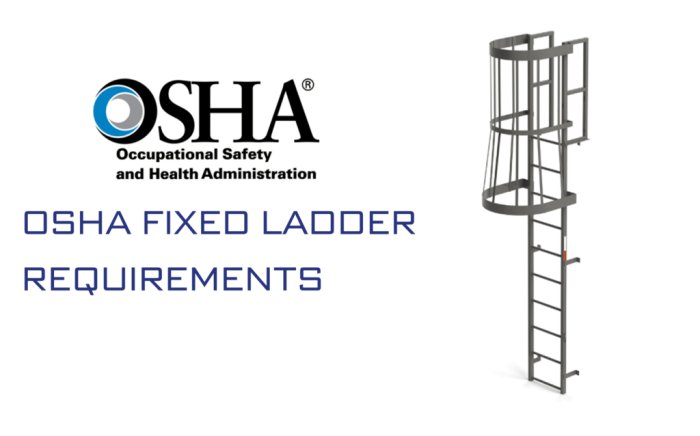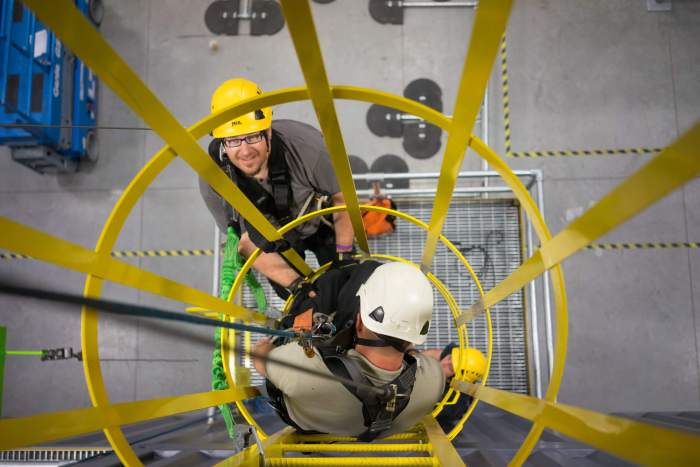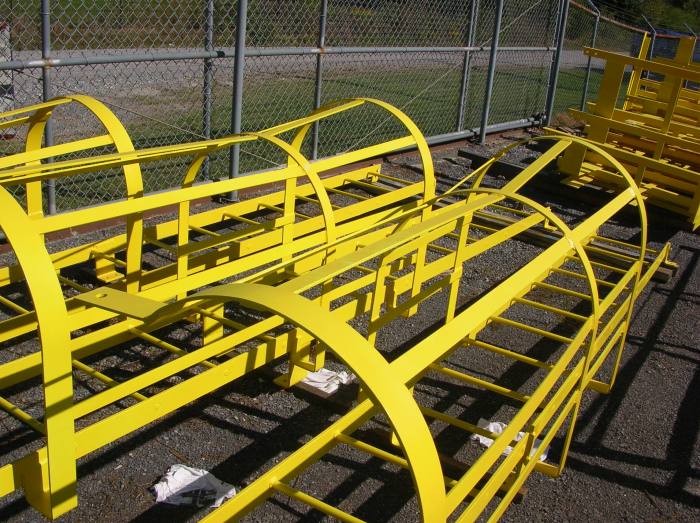What is your employer required to have on fixed ladders – Understanding what your employer is required to have on fixed ladders is crucial for ensuring a safe and compliant work environment. This comprehensive guide delves into the OSHA regulations, ladder components, inspection and maintenance procedures, and training requirements to empower employers and employees alike.
Fixed ladders are ubiquitous in various industries, providing access to elevated work areas. However, their improper design, installation, or maintenance can lead to severe accidents. This guide aims to provide a clear understanding of the essential requirements for fixed ladders, enabling employers to fulfill their legal obligations and protect their workforce.
Safety Requirements for Fixed Ladders: What Is Your Employer Required To Have On Fixed Ladders

The Occupational Safety and Health Administration (OSHA) has established comprehensive regulations regarding the design, installation, and maintenance of fixed ladders to ensure the safety of workers using them. These regulations aim to minimize the risk of falls, slips, and other accidents associated with fixed ladders.
OSHA’s requirements cover various aspects of fixed ladders, including:
- Materials and Dimensions:Ladders must be constructed of durable materials such as metal or fiberglass and meet specific dimensions for rung spacing, side rail height, and width.
- Construction:Ladders must be securely anchored and have non-slip rungs and side rails. They should also be equipped with safety cages or fall arrest systems when necessary.
- Access and Egress:Ladders must provide safe and unobstructed access to elevated work areas. They should be properly located and have adequate clearance for safe use.
Ladder Components and Features, What is your employer required to have on fixed ladders
Fixed ladders consist of several essential components:
- Rungs:Horizontal bars that provide support for climbing and descending.
- Side Rails:Vertical supports that guide and protect climbers.
- Cages:Safety barriers that prevent falls from elevated heights.
Ladders are made from various materials, each with its own advantages and disadvantages:
- Metal:Strong, durable, and resistant to corrosion.
- Fiberglass:Non-conductive, lightweight, and corrosion-resistant.
- Wood:Inexpensive, but less durable and more susceptible to rot.
FAQ Explained
What are the key components of a fixed ladder?
Fixed ladders consist of essential components such as rungs, side rails, and cages. Rungs provide support for climbing, while side rails offer stability and prevent falls. Cages are optional but provide additional protection against falls from heights.
How often should fixed ladders be inspected?
Regular inspections are crucial for maintaining ladder safety. OSHA recommends daily visual inspections and annual comprehensive inspections by a qualified person. Inspections should cover all ladder components, including rungs, side rails, and cages, to identify any damage or defects.
What training is required for employees using fixed ladders?
Employers are responsible for providing training on the safe use of fixed ladders. Training should cover topics such as proper climbing techniques, fall protection measures, and ladder inspection procedures. Employees should be assessed for understanding and compliance to ensure they can use fixed ladders safely.


